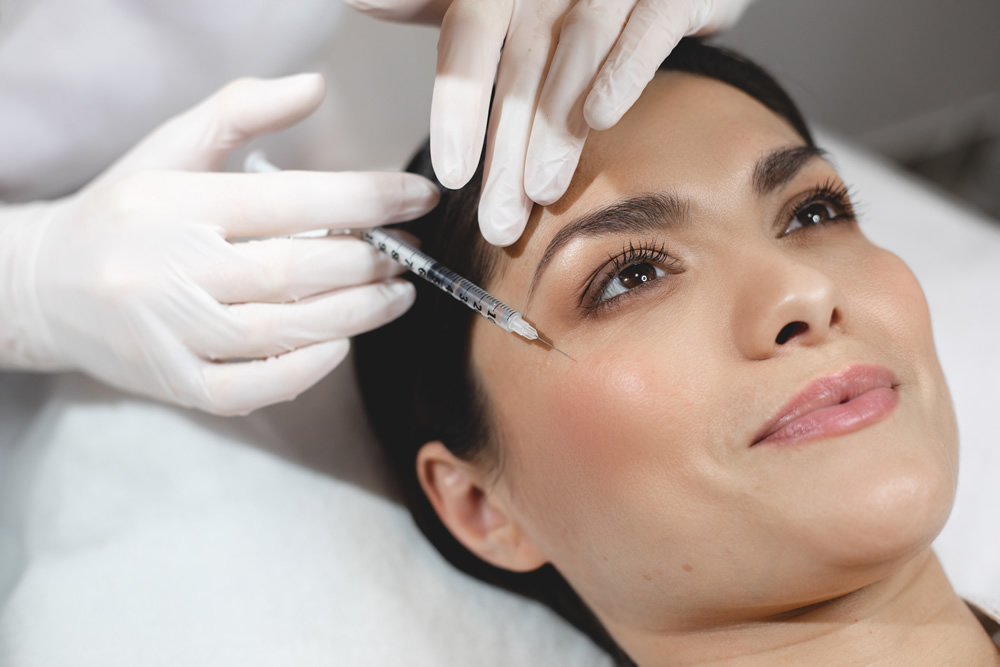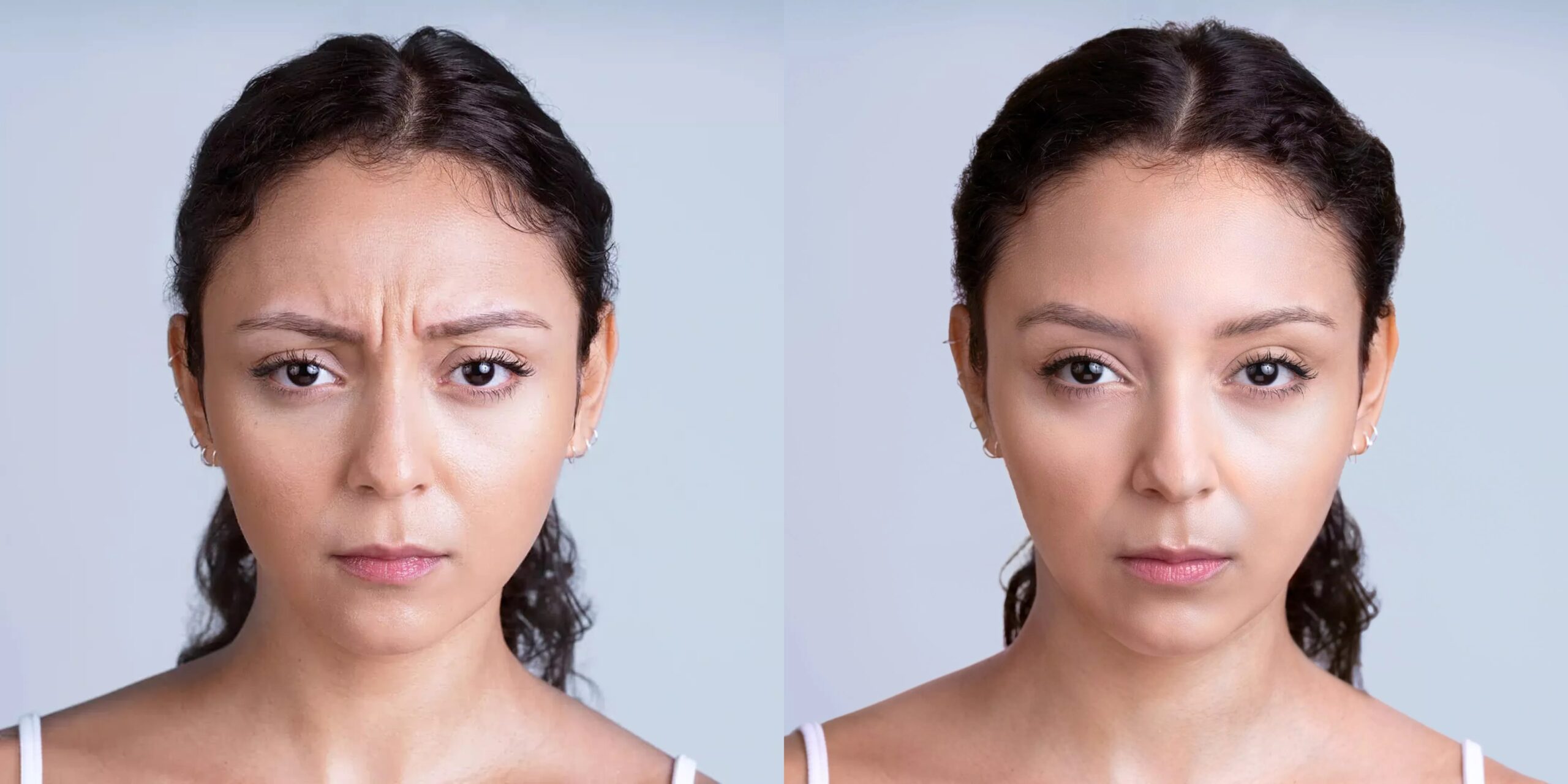Xeomin Treatment
As we age, dynamic wrinkles start to appear and become etched onto the face. Dynamic wrinkles develop due to repeated facial movements, including squinting, smiling, frowning, and raising the eyebrows. Over time, these lines can remain visible even when the face is at rest, causing one to look older than they actually are. Patients frustrated with dynamic wrinkles can achieve smooth, clear skin with Xeomin injections. Dr. Michele Green was one of the first dermatologists in NYC to incorporate neuromodulators like Xeomin into her patients’ treatment plans. She is known for helping her patients achieve beautiful, natural pan-facial rejuvenation that lasts.
Xeomin is a neuromodulator designed to inhibit nerve signaling to targeted muscles. When injected, Xeomin essentially “freezes” the muscle, limiting contractions and reducing the formation of dynamic wrinkles. Xeomin is FDA-approved for the treatment of glabellar lines (lines between the eyebrows) but is often used off-label to treat forehead lines, crow’s feet (lines around the eyes), chin dimpling, and TMJ. The beauty of Xeomin is that, unlike other neuromodulators, patients do not experience resistance or tolerance to Xeomin over time. With Xeomin, Dr. Green can create long-lasting, consistently stunning results.
Experienced board-certified dermatologist Dr. Michele Green has been skillfully treating patients in her Upper East Side New York City dermatology office for over 25 years. A master in a wide array of medical and cosmetic treatments, Dr. Green delivers results that look natural, beautiful, and “unfrozen.” Dr. Green’s “less is more” philosophy and outstanding cosmetic results have earned her consistent recognition as one of the leading cosmetic injectors in New York by Castle Connolly, New York Magazine, Super Doctors, and The New York Times. When you consult with Dr. Green, she will assess your skin concerns to create a tailored treatment plan to leave you with clear, radiant skin.
What is Xeomin?
Xeomin is a botulinum toxin product developed by Merz Pharmaceuticals, LLC, that functions as a neuromodulator for both cosmetic and medical uses. This neuromodulator contains the active ingredient incobotulinumtoxina to block nerve signals, which can help prevent and reduce dynamic wrinkles caused by repetitive expressions and muscle contractions. Xeomin also contains human albumin and sucrose. Human albumin is a protein that serves as a stabilizing agent, helping to safeguard the botulinum toxin molecule during manufacturing, storage, and administration by preventing it from adhering to the vial walls, thus ensuring a consistent dose upon injection.
Xeomin is highly effective in eliminating the visible signs of fine lines and wrinkles that become deeply etched into the skin from repeated muscle movement, such as crow’s feet around the eyes, forehead lines, and glabellar lines. Additionally, Xeomin can be employed to treat medical conditions like blepharospasm, characterized by involuntary eyelid twitching; cervical dystonia, marked by abnormal neck positioning and muscle activity; chronic drooling; and upper lip spasticity. Regarded as a “pure” form of botulinum toxin, Xeomin is distinct in that it is not manufactured with any complexing proteins, allowing for quicker results from the treatment and reducing the likelihood of patients developing resistance over time.
How Xeomin treatment works
Xeomin is derived from botulinum toxin type A, a substance produced by the bacterium that leads to botulism. When purified and administered in the correct dosage, botulinum toxin type A effectively and safely addresses numerous medical and cosmetic issues. When injected into the muscle, the Xeomin “freezes” the muscle by obstructing the signal at the neuromuscular junction, preventing it from contracting. The muscles impacted by Xeomin are unable to create facial expressions that fold the skin, resulting in dynamic wrinkles. In cosmetic applications, Xeomin is injected into specific facial muscles that contribute to wrinkles, including those that contribute to the development of frown lines, crow’s feet around the eyes, furrows, and frown lines.
What is Xeomin used for?
Xeomin is a treatment that can be used for both cosmetic and medical purposes. Cosmetically, Xeomin is most effective at eliminating dynamic wrinkles on the face. Dynamic wrinkles are fine lines or creases that occur due to muscle movement. For instance, when you smile, lines form around your mouth and at the corners of your eyes. As we age and collagen and elastin levels decrease, the skin loses its ability to bounce back effectively, causing wrinkles to remain even when facial expressions are not present and to become more pronounced over time. Xeomin treatment relaxes the muscles responsible for creating these wrinkles without eliminating your facial expressiveness, effectively reducing the appearance of dynamic fine lines. Xeomin is often used off-label to treat TMJ pain associated with the masseter muscle, chin dimpling, and vertical lines of the neck caused by platysmal bands.
Xeomin has also received FDA approval to treat certain medical conditions. Specifically, it is approved to address various forms of upper limb spasticity, including blepharospasm, which causes involuntary eyelid spasms; cervical dystonia, characterized by spasms in the neck muscles and abnormal neck positioning; and upper lip spasticity. Furthermore, Xeomin can be utilized for treating hyperhidrosis, a condition marked by uncontrollable excessive sweating, typically in the underarms, palms of the hands, and soles of the feet.
What are the most common cosmetic areas for Xeomin treatment?
- Forehead lines
- Frown lines (also known as glabellar lines or 11s)
- Crow’s feet (lines around the eyes)
- Necklines or cords (platysmal bands in the neck)
- Depressor anguli oris (DAO) muscles (to treat a downturned mouth)
- Pau d’orange of the chin (to treat dimpling of chin wrinkles)
- Masseter muscles (for facial slimming or TMJ pain)
What is the process for Xeomin treatment?
Before receiving Xeomin injections, you will have a consultation with Dr. Green at her private dermatology office in NYC. During this consultation, you will have the opportunity to talk about your specific concerns and ideal aesthetic outcomes. Medical photos will be taken to help determine the best cosmetic treatment for you and track the results. Dr. Green will gather a comprehensive medical history, review any previous cosmetic procedures, and evaluate your unique facial anatomy. Your Xeomin injections may occur on the day of your initial consultation or be scheduled for a later date, depending on your preference.
To prepare for your Xeomin treatment, we recommend avoiding blood thinners, such as aspirin, Aleve, Motrin, multivitamins, or fish oil, for a week prior to your procedure to minimize the risk of bruising at the injection sites. Patients sensitive to pain can apply a topical numbing cream one hour before the Xeomin procedure to minimize discomfort. When you arrive at the office, the treatment area will be sterilized and prepped for treatment. Dr. Green will mark the injection sites and carry out the procedure with a small needle. An ice pack will be applied to the treatment area immediately after the procedure to help reduce any potential swelling. Dr. Green typically asks patients to return in two weeks to assess the cosmetic results and determine if additional Xeomin is needed to achieve the best cosmetic results.
What is the aftercare for Xeomin injections?
It is important to stay upright for four hours following your Xeomin injections to allow the Xeomin to settle. To reduce the risk of swelling or infection, refrain from aerobic exercise and excessive heat, including hot tubs and saunas, for 48 hours. Patients should continue to abstain from blood thinners for an additional week to reduce the risk of bruising. Patients prone to bruising can take Arnika, an herbal supplement, for several days to prevent bruising and accelerate the healing of any bruises that occur.
Side effects of Xeomin
Due to the nature of neurotoxins, some common possible side effects can occur, which is why it is essential to read the medication guide for Xeomin before beginning treatment.
- Common side effects of Xeomin are temporary and include:
- Bruising at the site of injection
- Localized Swelling
- Headache
- Temporary eyelid ptosis (drooping eyelids) or asymmetry
Rare side effects of Xeomin treatment include:
- Dry Eyes, excessive tearing, double vision, or blurred vision
- Dry mouth
- Muscle Weakness or injection site pain (when used for cervical dystonia)
- Neck pain
- Respiratory Tract Infection
- Trouble breathing, swallowing, or talking
Immediate allergic reaction side effects that require immediate medical help include:
- Itching
- Rash
- Red itchy welts
- Wheezing or Asthma symptoms
- Dizziness
More serious side effects that can occur include blurred vision, drooping eyelids, double vision, and allergic reactions. When it comes to cosmetic injectable treatments such as Xeomin, it’s crucial to have up-to-date medical history information from your healthcare provider. If you experience any breathing problems or severe adverse reactions, you should seek medical advice as soon as possible. In rare cases, botulinum toxin can have adverse effects if it spreads from the injection area, including but not limited to paralysis, respiratory failure, and even death. Because of these risks, a board-certified dermatologist or plastic surgeon such as Dr. Michele Green should always be relied upon for proper injection and accurate dosage.
How long does it take Xeomin to work?
Patients often wonder, “When does Xeomin kick in?” Following the Xeomin injection procedure, patients will start to see the effects of their Xeomin a few days after the initial injections, with the full effects of Xeomin being visible after one or two weeks. Xeomin often has a quicker onset of action compared to other neuromodulators because it is a pure toxin. Dr. Green recommends that all of her Xeomin patients return to her two weeks after their cosmetic injections to ensure that their Xeomin treatments have been effective and that they have the best results.
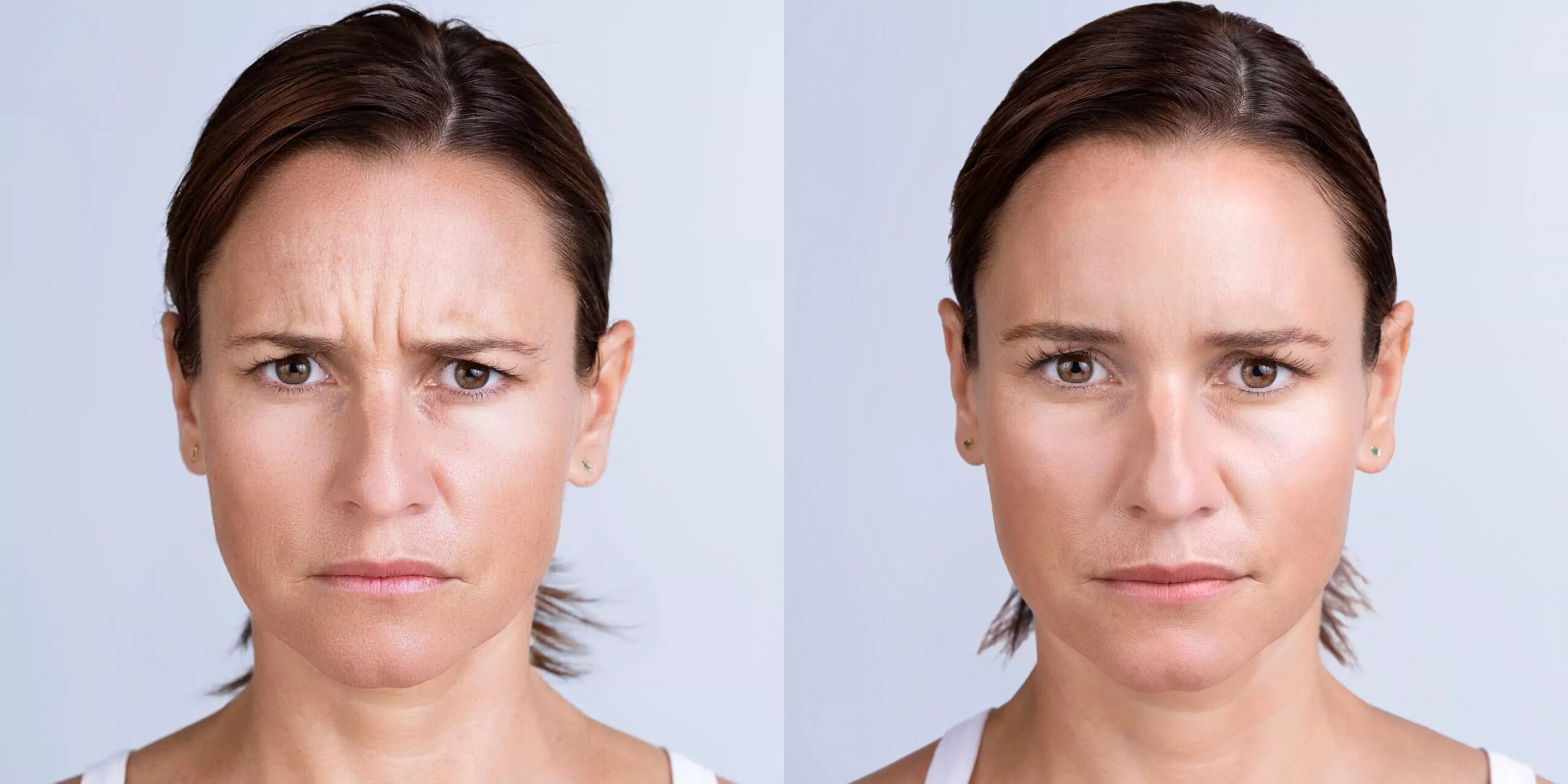
Xeomin Injections FAQs
Is Xeomin FDA-approved?
Yes! Xeomin is FDA-approved for the treatment of frown lines between the eyebrows. Clinical trials done on Xeomin divided patients into an experimental group and a placebo group. The trial showed that the injection of Xeomin was safe and effective in temporarily smoothing out the frown lines for a more youthful appearance. Patients who were treated with Xeomin injections were satisfied with the outcomes of their treatment and noted a smoother complexion. In contrast, patients who were treated with placebo injections indicated that there was no difference in the appearance of their skin before and after having injections. Xeomin injections are also approved for the treatment of cervical dystonia and blepharospasm. Additionally, healthcare providers often use Xeomin off-label to treat an array of conditions, including cosmetic concerns like forehead lines and crow’s feet, as well as medical conditions like upper limb spasticity and sialorrhea.
Is Xeomin good for crow’s feet?
Yes! Xeomin is an excellent choice for treating crow’s feet. When we smile, the muscles around the eyes wrinkle, forming what looks like crow’s feet. The use of Xeomin in these muscles prevents them from contracting and folding the skin, resulting in overall smoother skin. When you consult with Dr. Michele Green at her private dermatology office on the Upper East Side of New York, she will develop a personalized treatment plan for your dynamic wrinkles that aligns with your needs and desired aesthetic outcomes.
How long does Xeomin last?
Clinical trials have also shown that Xeomin’s effects last three to four months. Many patients undergo maintenance sessions three to four times a year to consistently enjoy its cosmetic benefits. With repeated injections, some patients notice that the effects last longer, with some experiencing smooth, wrinkle-free skin for up to six months. When you consult with Dr. Green for your Xeomin injections, she will collaborate with you to create a treatment schedule that aligns with your aesthetic needs and goals.
Is Xeomin safe?
Absolutely! Xeomin is a highly safe and effective treatment for eliminating dynamic wrinkles and improving symptoms of various medical conditions. The only contraindication for Xeomin injections is a hypersensitivity or allergy to any ingredients. It also usually only results in mild side effects, such as bruising, redness, and swelling at the injection site, that go away quickly on their own. The risk of developing more serious side effects can arise when you receive treatment from a less experienced practitioner. Therefore, it is essential to receive Xeomin treatment from an expert, experienced, board-certified dermatologist such as Dr. Michele Green to reduce the risk of developing serious side effects.
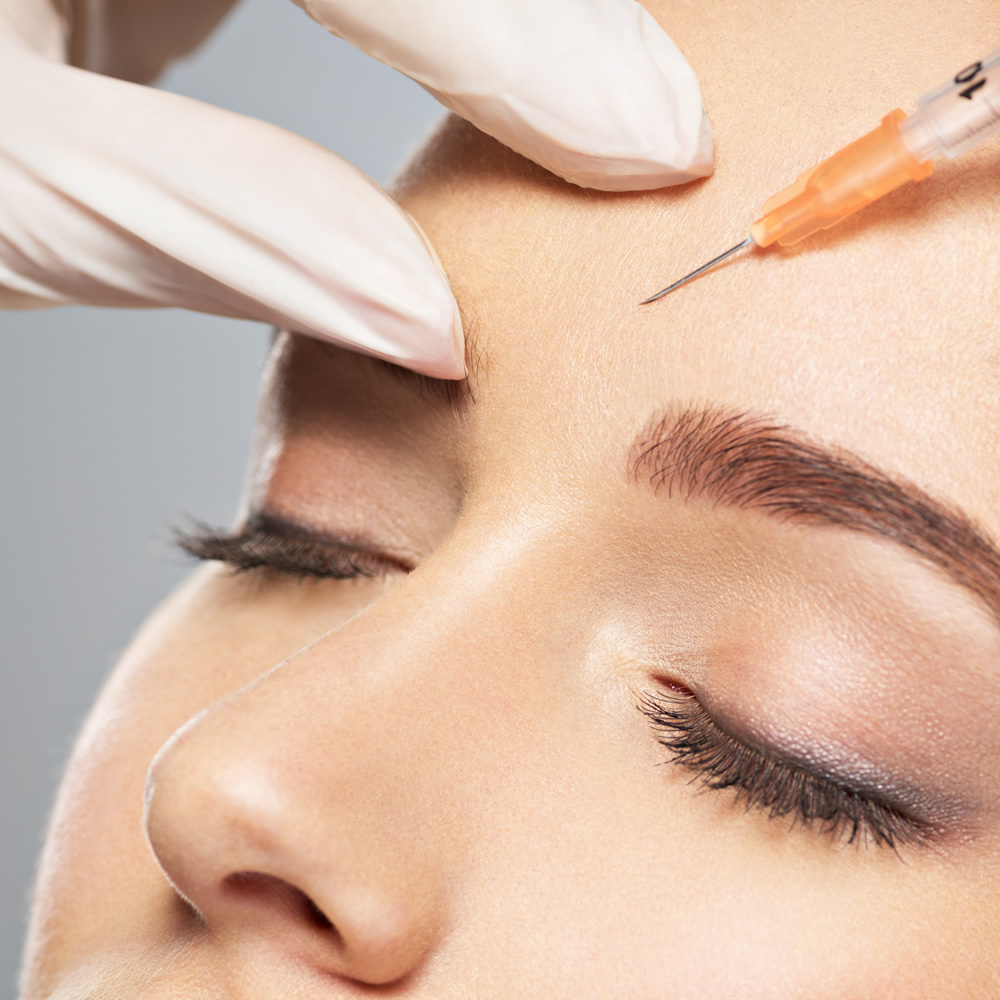
How much Xeomin for a lip flip?
The amount of Xeomin required will depend on the patient’s aesthetic concerns and facial anatomy. Typically, less Xeomin is required for a lip flip compared to other areas of cosmetic concern, such as frown lines. When you consult with Dr. Green, she will assess your cosmetic goals to determine the amount of Xeomin required to create your lip flip.
What is the cost of Xeomin?
The cost of Xeomin treatment can vary based on factors such as the injector’s experience and skill level and the geographic location of the treatment office. Some clinics charge for Xeomin based on the number of units used, while others charge according to the number of areas treated. The injector’s expertise and artistry strongly influence the quality of the Xeomin injections. Dr. Michele Green is an internationally acclaimed, board-certified cosmetic dermatologist with decades of experience in administering Xeomin. As a master injector with over 25 years of experience, she can provide you with safe and effective Xeomin injections to leave you with clear, smooth skin. During your consultation with Dr. Green for Xeomin treatment, she will collaborate with you to establish a personalized facial rejuvenation plan that aligns with your needs, goals, and budget.
Who should not use Xeomin?
Patients should not receive Xeomin if they are allergic to any of the ingredients listed in the Xeomin medication guide or if they have experienced an allergic reaction to any other botulinum toxin products, such as Myobloc, Dysport, or Botox. Xeomin injections should not be administered to patients who are pregnant or breastfeeding. Dr. Green will review your medical history and current medications before treating you with Xeomin injections for facial wrinkles. It’s important to inform Dr. Green if you have any muscle nerve conditions, including amyotrophic lateral sclerosis ALS (Lou Gehrig’s disease), myasthenia gravis, or Lambert-Eaton syndrome. Always let Dr. Green know if you are taking any prescription medications (including muscle relaxants, anticholinergics, antibiotics for infection, allergy or cold medications, and sleeping pills), herbal supplements, or over-the-counter medications, as these could potentially interact with your Xeomin treatment.
Why did my Xeomin wear off so fast?
The cosmetic effects of Xeomin typically last for three to four months. However, this is an average, and some individuals enjoy the benefits of their Xeomin injections for even longer periods. If your Xeomin results do not last as long, your muscles may be very strong, or not enough Xeomin was administered. Dr. Green always has her patients return two weeks after the initial injection for any necessary touch-ups, including adding more units, to ensure her patients achieve the best, long-lasting cosmetic results.
What is the black box warning for Xeomin?
The FDA creates labels for all medications that include the full prescribing information of the medication and any required black box warnings. Black box warnings are potential adverse effects that can be life-threatening and require immediate medical attention. Even the most common medications, including Tylenol and Ibuprofen, have black box warnings listed. Xeomin and other neuromodulators have the same black box warning regarding the distant spread of toxin effects, which can lead to symptoms associated with botulinum toxin outside the injection site. Individuals who have experienced the distant spread of toxin have reported the symptoms starting anywhere from four to weeks following injection. Potential symptoms include difficulty swallowing and breathing. The likelihood of experiencing these symptoms is likely highest in pediatric patients receiving treatment for upper limb spasticity. Adverse side effects of cosmetic treatment with Xeomin are incredibly low when injections are performed by an expert board-certified dermatologist like Dr. Michele Green.
What are the long-term side effects of Xeomin?
Because Xeomin injections deliver only temporary results, any adverse effects are also temporary. The most common side effect is mild swelling or bruising at the injection site, which typically resolves within a few days of the injection. It is crucial to receive your Xeomin injections from an experienced, board-certified dermatologist, such as Dr. Michele Green, who has the knowledge and experience to provide the best cosmetic results without any unwanted side effects.
Is Xeomin better than Botox?
When patients ask whether Xeomin is better than Botox, the answer is not straightforward. Both Xeomin and Botox are highly effective treatments for reducing the appearance of dynamic wrinkles cosmetically and for treating various medical conditions, such as muscle spasticity throughout the body. Neither treatment is inherently “better” than the other, and Botox and Xeomin can be used interchangeably. Both are derived from type A botulinum toxin, with Xeomin being incobotulinumtoxinA and Botox being onabotulinumtoxinA, so they interact with the neuromuscular junction in the same way. The primary difference between these neuromodulators lies in the protein attachment. Xeomin has no complexing protein attached to the botulinum toxin, while Botox includes an additional protein. Patients can develop resistance to the added protein in Botox, but they cannot develop resistance to Xeomin. Some patients can also form antibodies to the complexing protein in Botox, resulting in their bodies neutralizing the drug more quickly. This diminishes the duration and can lead to underwhelming or ineffective results. Since Xeomin is free of these complexing proteins, patients can’t develop a resistance or tolerance to it, allowing patients to experience long-lasting rejuvenation with Xeomin.
Does Xeomin wear off faster than Botox?
Neuromodulators like Botox and Xeomin have long-lasting but temporary results. Botox and Xeomin each produce results that last approximately 3 to 4 months, with some studies demonstrating that Xeomin’s effects may be visible for even longer. Typically, Dr. Green recommends that patients schedule a touch-up appointment three to four times a year to maintain the treatment’s results. Due to additional proteins attached to the toxin in Botox injections, there is a risk that Botox will lose effectiveness over time, in which case Dr. Green recommends patients turn to Xeomin for longer-lasting effects.
Should I get Botox or Xeomin?
Both Botox and Xeomin are excellent options for treating dynamic fine lines and wrinkles. Neither treatment is inherently better than the other, and the one that is best for you depends on your cosmetic goals or the specific medical condition you want to address. If you’re seeking treatment for conditions like chronic migraines or bladder control issues, Botox is FDA-approved for those purposes. Xeomin is FDA-approved for treating excessive drooling. Regarding cosmetic goals, both Xeomin and Botox can effectively address fine lines and wrinkles on the forehead and around the eyes. To determine which treatment is suitable for you, consulting a board-certified expert dermatologist, such as Dr. Michele Green, would be the best approach. She can evaluate your treatment area and recommend a plan that will best achieve your aesthetic and physical goals and needs.
Can I switch from Botox to Xeomin?
Yes! There is no harm in switching from Botox to Xeomin. In fact, some patients notice their neuromodulator treatment lasts longer when they switch to Xeomin. Recent studies have shown that the results from Xeomin may last longer than those from Botox. Additionally, due to a protein complex in Botox, some patients begin to build resistance, causing their bodies to metabolize the neurotoxin more quickly. Xeomin does not contain a protein complex, so patients cannot develop a resistance to it. Both Xeomin and Botox can be used for similar purposes, so it’s best to consult with Dr. Green to determine if switching to Xeomin is right for you.
Can you switch between Xeomin and Botox?
Some patients wonder whether they can or should switch between Xeomin and Botox Cosmetic. The answer is that it depends. When injected for cosmetic purposes, patients can switch which neuromodulator they receive if desired. It’s important to avoid using neuromodulators together at the same time. No studies have examined the combination of these products during a single injection, so this should be avoided. If you want to try either Botox or Xeomin, you can start with one and then try the other after a certain period. Although they are all neurotoxins, they each have slightly different chemical formulations.
Is Dysport better than Xeomin?
Both treatment options are equally good. Xeomin and Dysport are incredibly similar and can often be used interchangeably in facial rejuvenation treatment. They are both injectable neurotoxins that work cosmetically to smooth wrinkles. Dysport takes advantage of the neurotoxin abobotulinumtoxinA. The primary difference between Xeomin and Dysport is the addition of a complex protein attached to the botulinum toxin molecules of Dysport. The protein attached to Dysport allows it to diffuse 1-3 cm from the injection site, while Xeomin does not have a protein complex, which leads to Xeomin diffusing less. In addition to affecting the diffusion of the neuromodulator, the complexing protein can affect the duration and strength of the Dysport injections. With repeated injections of the same neuromodulator, some patients can develop antibodies to the complexing protein attached to the complex. When this occurs, patients become resistant to the effects of the toxin, leading to weaker and shorter results. While Dysport and Botox both have the risk of developing resistance, Xeomin does not have this risk because it lacks these proteins.
Which is better, Jeuveau or Xeomin?
Jeuveau is one of the newest neuromodulators available, receiving FDA approval in 2019. Jeuveau and Xeomin both work by blocking the release of acetylcholine, a neurotransmitter that causes muscle contraction. Through this mechanism of action, they paralyze the muscles that cause frown lines, resulting in smoother skin. Jeuveau is the brand name for prabotulinumtoxina-xvfs, a botulinum toxin type A neurotoxin complex, while Xeomin is the brand name for incobotulinumtoxina, a pure botulinum toxin type A neurotoxin. The key difference between these two brands is the additional protein attached to the neurotoxin in Jeuveau. The complexing protein can affect the duration and strength of the Jeuveau injections. With repeated injections of the same neuromodulator, some patients can develop antibodies to the complexing protein attached to the complex. When this occurs, patients become resistant to the effects of the toxin, leading to weaker and shorter results. While Jeuveau has the risk of developing resistance, Xeomin does not have this risk because it lacks these proteins.
Where to buy Xeomin?
Although you cannot purchase Xeomin over the counter or online, many clinics, MedSpas, and dermatology offices provide Xeomin injections. It is crucial to research the experience and credentials of the individual administering your cosmetic injectables to ensure a safe and effective treatment. Typically, clinics and spas do not have physicians performing these cosmetic procedures. While they tend to be more affordable, the injector may lack the necessary experience and understanding of the anatomy of the injected area. Additionally, there is a higher risk of counterfeit injectables at certain clinics. For optimal cosmetic results and safety, always have Xeomin injections performed by a board-certified dermatologist like Dr. Michele Green. Dr. Green is a skilled artist with over 25 years of experience in cosmetic injectables and was one of the first dermatologists in Manhattan’s Upper East Side to administer Xeomin for cosmetic purposes. Dr. Green’s “less is more” philosophy ensures a natural appearance for your cosmetic injections, leaving you looking refreshed and more youthful.
Does Xeomin need to be refrigerated?
Unlike other neurotoxins, Xeomin does not require refrigeration until it is reconstituted with saline. Xeomin is a pure neurotoxin without any additional proteins attached, which allows it to remain stable and be stored at room temperature. However, once it has been reconstituted, it must be refrigerated. Neuromodulators such as Botox or Myobloc must be stored in a refrigerator at all times.
Is Xeomin cheaper than Botox for the forehead?
The cost of neuromodulator treatment varies from patient to patient, depending on the areas being treated and the location of the treatment. Typically, the prices for Botox and Xeomin for the forehead are similar. While MedSpas may offer cheaper rates, choosing an experienced injector like board-certified Dr. Green is crucial to avoid unwanted side effects, ensure safety, and achieve optimal results.
Should I move my forehead after Xeomin injections?
It is not necessary to move your forehead after receiving Xeomin, as doing so will not affect the final results. However, it is crucial to avoid massaging the treatment area after receiving Xeomin injections, as this can displace the Xeomin and potentially lead to undesirable results. When you consult with Dr. Green for your Xeomin injections, she will review all aftercare instructions and procedures to ensure you achieve the best cosmetic outcomes.
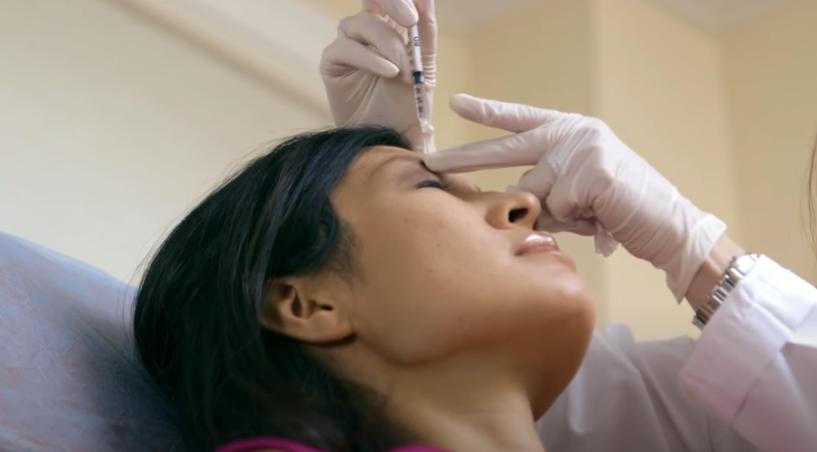
How do I get started with Xeomin treatment today?
If you are starting to notice fine lines and wrinkles forming from repeated facial expressions or want to prevent wrinkles from arising in the first place, Xeomin is here to help. Xeomin works to smooth and prevent dynamic wrinkles on the skin. Unlike Botox, Dysport, and other neuromodulators, patients do not gain resistance or tolerance to Xeomin, allowing them to achieve long-lasting rejuvenation. There is little to no downtime or side effects associated with Xeomin injections, making them an excellent treatment option for reducing fine lines and wrinkles and creating smooth, clear skin. Dr. Green was one of the first dermatologists in NYC to offer neuromodulator injections and will develop a personalized Xeomin treatment plan to help you achieve natural-looking, long-lasting rejuvenation that lasts.
Dr. Michele Green, based in New York City, is an internationally recognized board-certified dermatologist with over twenty-five years of experience delivering top-quality non-invasive cosmetic procedures, including Xeomin, to a discerning clientele worldwide. Castle Connolly, Super Doctors, New York Magazine, and The New York Times consistently recognize Dr. Green as one of the best dermatologists in NYC for her commitment to patient care and expertise. Dr. Green adopts a holistic approach and follows a less-is-more philosophy in facial rejuvenation, tailoring each patient’s treatment plan to include a blend of cosmetic treatments and specially formulated skincare products that best address their unique concerns and aesthetic goals. To discover more about non-invasive pan-facial rejuvenation, schedule a consultation with Dr. Green at her private dermatology office in Manhattan’s Upper East Side by calling 212-535-3088 or reaching out to us online.
 212-535-3088
212-535-3088 